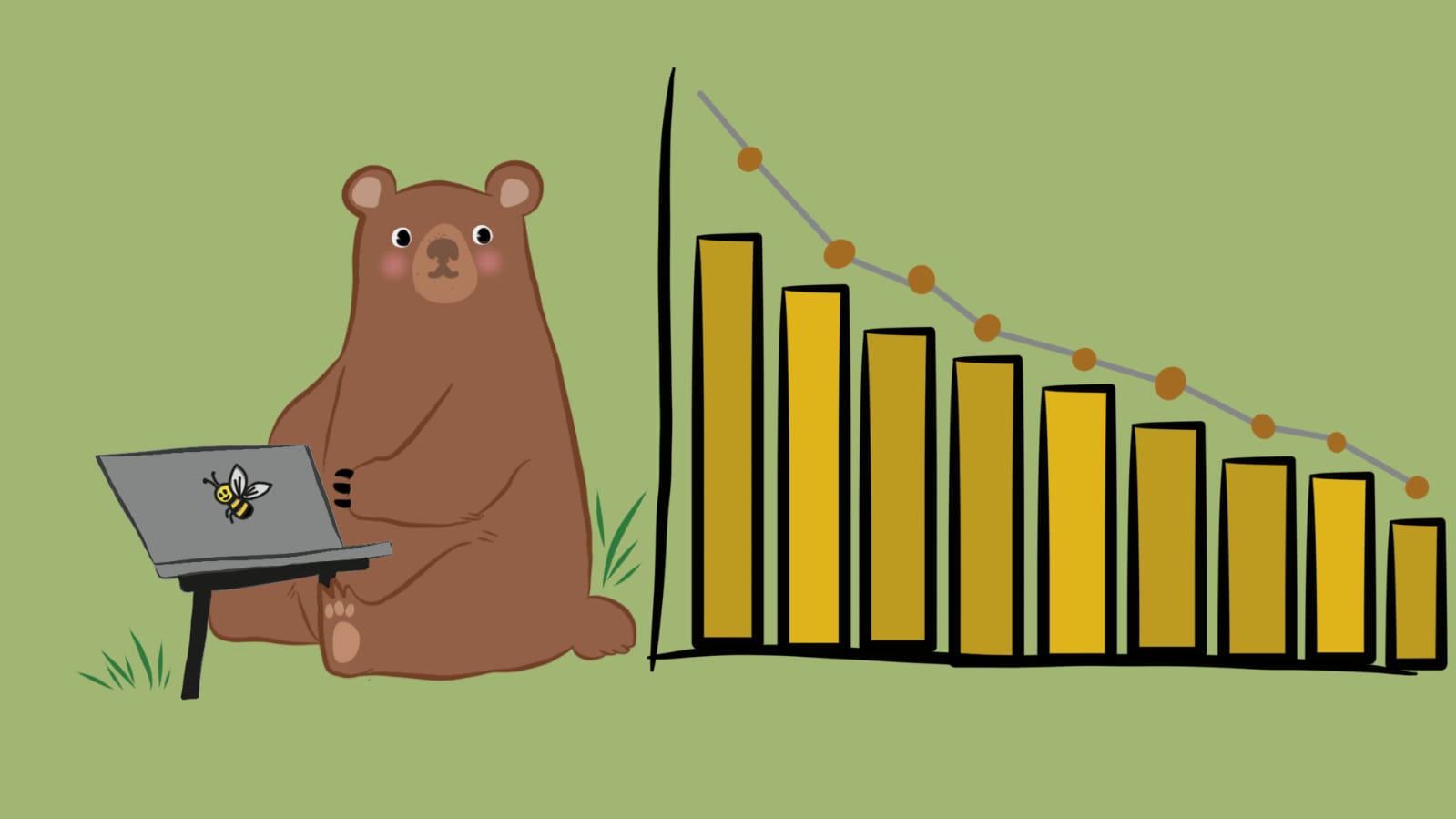
The Bull and Bear Markets are two common and well-known terms in the stock market world. But why are the names of these markets derived from animals? It's because these markets are emblematic of the attacking styles of these two animals: a bull tends to attack its prey by pushing it upward while the bear attacks its prey with its paw in a downward motion.
Bull and Bear in the Stock Market
A bull in a bull market is a symbol of stock prices going up, whereas a bear is a symbol of stock prices going down.
A bear in a bear market is symbolic of a pessimistic approach where one feels that the market will have a fall for a longer period.
What is a Bear Market?
Bear markets are when an index experiences a 20% fall or even more as compared to recent highs, at least for two months or more. Here, share prices continuously fall leading to a downward graph. Economic slowdown and layoffs are experienced during this period.
Few Features of Bear Market
- Panic Sell: People in the bear market turn pessimistic by anticipating losses. Hence the majority of people start selling their securities as early as possible, as they think that the market might fall even more in the near future. Also, the people who invest during this time happen to experience a low risk-reward ratio. Due to panic in the market, there are more sellers than buyers.
- Less Demand: Investors’ confidence is extremely low during the bear market. Out of panic, people tend to take out their money from the market and seek safer investment options. Furthermore, potential buyers avoid investing in the market for a while. This leads to a further fall in the market price of stocks.
- Economic Condition: Usually bear markets exist during recessions. The economy slows down, people’s jobs are in danger and various factors force investors to consider fulfilling basic needs more than investing. Sometimes, a cash crunch can also be felt by people and lead to disinvestment in the stock market.
- Volatility: In a bear market, people are afraid to invest and those who invest tend to face a loss as stock prices lose their value. There are greater fluctuations, as the price is volatile in the bear market compared to the bull market.
- Lack of Awareness: Often, people are unaware when the market is entering into a bear market. But it's important to know in which market an investor is trading because if an investor isn’t aware of the shift to bear market, they would continue to invest as per the strategy they'd use in the bull market and, thus, may face a huge loss.
- Emotional Shift: In the case of a bull market, a person is usually certain and optimistic about the market conditions. But in the bear market, people are uncertain and experience emotions like anxiety, stress, fear and panic.
Things To Look For In A Bear Market
Now that we know what the bear market is, let us know how to behave in it.
- Value Investing: If one wants to invest in the bear market, one can opt for value investing. In value investing, an investor should pick up stocks of blue-chip companies and dividend stocks. It is a time for a quality investment because once the market recovers, these stocks will recover faster.
- Avoid Making Decisions in Haste: Instead of panicking, one must understand that the market will recover. Once it happens, an individual can decide if they want to still sell the stock or hold on. The situation after recovery can guide them to make better investing decisions and give them clarity.
- Look For Options: During a bear market, one should not only review one’s investment portfolio but also go for less risky options like SIP, debt securities, debt funds and debt mutual funds. Seeking alternatives can help you prevent losses.
- Patience: During these times, one should remain patient and plan for long term goals. You should not get anxious when the market is taking a downturn. Instead, you should stay calm and composed to make rational decisions and to avoid losses. Getting carried away by news and negativity can harm you and provoke you to take the wrong investment decisions.
- Look For Defensive Stocks: During a situation like this, investing in metals like gold and silver or defensive stocks like food and personal care stocks can help an individual, as these stocks tend to perform better. Also, one can think about stocks of sectors like real estate, health care and utilities. Thus, wisely diversifying portfolios can help in mitigating loss.
- Take Help: It is good to take advice from an expert whom you trust. A financial advisor can guide you according to your financial conditions, risk appetite, investment goals, tenure of investment and more. A situation can have a different impact on different people and thus ways to tackle it can vary.
Lastly, the bear market is just a phase of the economic cycle: it will come and go. Rather than being afraid of it, one must understand it and look at it as an opportunity. Along with being cautious, you must not let go of a potential profit. Thus, one must have a financial plan that takes care of all the possible economic conditions and volatility.

Wonderful article! Short but informative.